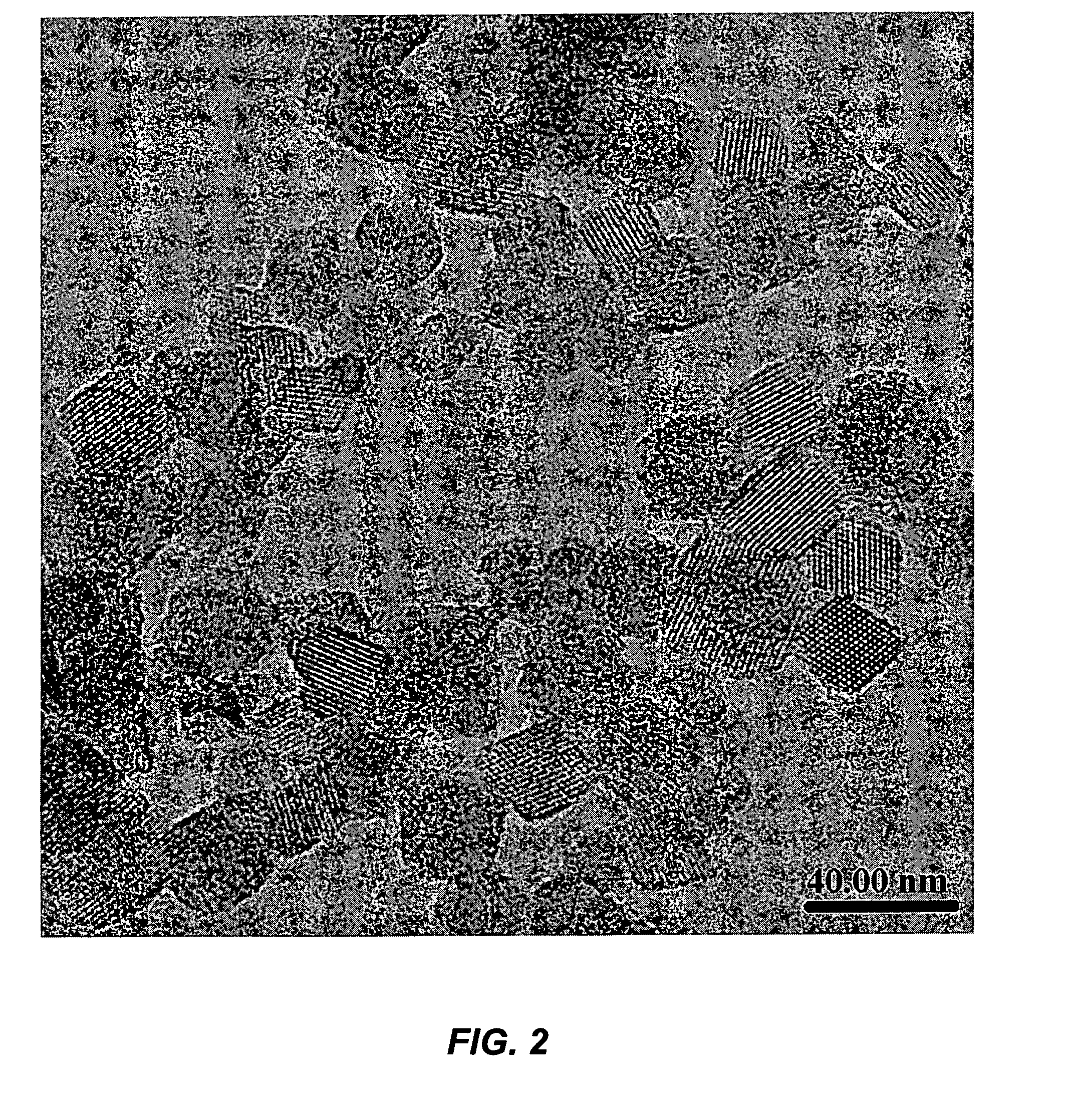Polymer-zeolite nanocomposite membranes for proton-exchange-membrane fuel cells
a technology of proton exchange and fuel cells, applied in the field of polymer/zeolite nanocomposite membranes, can solve the problems of no national hydrogen refueling network, fuel cell cost is expected to come down, and the cost of a mass produced pemfc system is currently 10 times greater than a comparable ice power system, etc., to achieve low methanol crossover, improve anode kinetics, and high proton conductivity
- Summary
- Abstract
- Description
- Claims
- Application Information
AI Technical Summary
Benefits of technology
Problems solved by technology
Method used
Image
Examples
example
Preparation of a Proton Exchange Membrane Fuel Cell Using the Membranes
[0050]The membrane electrode assemblies were prepared by sandwiching the membrane between two electrodes, and hot-pressing at 135° C. / 90 atm for 90s. The anode and cathode were prepared according to the procedures reported by Wilson (U.S. Pat. No. 5,211,984 (1993)). The catalyst loadings of anode (40% PtRu / C) and cathode (20% Pt / C) are 1 mg / cm2 and 0.4 mg / cm2, respectively.
[0051]In-situ methanol crossover, proton conductivity (membrane resistance) and polarization curve were electrochemically investigated for plain Nafion and zeolite modified membranes.
Crossover Measurement
[0052]Limiting current density of the methanol crossover through the membrane was measured by using the Solartron Electrochemical interface (SI1287) and PCT-2000 fuel cell test station (ElectroChem, USA). The 2M methanol solution was fed to the anodic side of the MEA with 0 psig back pressure while the cathodic side was kept in an inert humidif...
PUM
| Property | Measurement | Unit |
|---|---|---|
| proton conductivity | aaaaa | aaaaa |
| proton conductivity | aaaaa | aaaaa |
| temperature | aaaaa | aaaaa |
Abstract
Description
Claims
Application Information
 Login to View More
Login to View More - R&D
- Intellectual Property
- Life Sciences
- Materials
- Tech Scout
- Unparalleled Data Quality
- Higher Quality Content
- 60% Fewer Hallucinations
Browse by: Latest US Patents, China's latest patents, Technical Efficacy Thesaurus, Application Domain, Technology Topic, Popular Technical Reports.
© 2025 PatSnap. All rights reserved.Legal|Privacy policy|Modern Slavery Act Transparency Statement|Sitemap|About US| Contact US: help@patsnap.com



